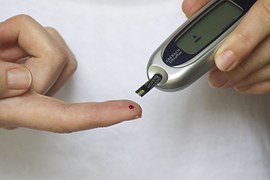
If diabetes is not treated, there can be serious complications. The following are the different complications of diabetes type 1:
- Diabetic Ketoacidosis is a frequent complication of type 1 diabetes.
- Diabetic Retinopathy: High blood sugars destroy the small blood vessels behind the eye. This makes the retinal arteries leaky and prone to bleeding which can lead to blurring of vision or blindness if left untreated.
- Diabetic Nephropathy: Diabetes is the most common cause of kidney failure. If left untreated, diabetes can cause the kidneys to fail leaving the patient to a life of hemodialysis. This has no symptoms and can only be determined by having tests that can check kidney function.
- Diabetic Neuropathy: This manifests as tingling sensation in the hands and feet due to the destruction of the small nerves that help with your sensation. A special type of nerves called autonomic nerves can also be affected. Depending on what autonomic nerve is damaged, there can be indigestion, difficulty in urinating, or impotence.
- Coronary Artery Disease: Having diabetes is a risk factor for a heart attack. A consistently high blood sugar in the blood increases inflammation that causes accumulation of cholesterol plaque in the arteries of the heart. Once these are totally blocked, a fatal heart attack can happen.
- Peripheral Arterial Disease: The same can happen with the arteries in the legs. Diabetics are prone to developing plaques that can clog these arteries. Symptoms include cramping in the leg and thigh after walking a few feet. The pulses in the legs and feet can also be diminished.
An examination of the eyes, kidneys, heart, and feet should be done to test the presence of these complications at the time that you are diagnosed with diabetes. If there are abnormalities seen during examination, your physician might request for more frequent monitoring of your condition.
